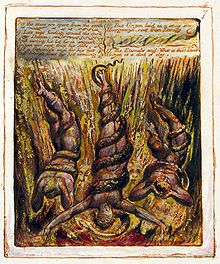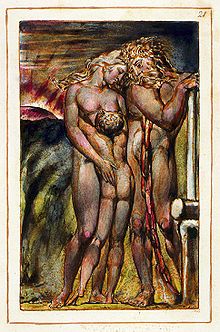In the Summer of the Fall of this Galaxy,
Nature is at the breadth,
the wonderful grace of such universes,
great days while knowing of the Seasons!!
To Mankind in Humanity?,
you're ignorant to these type things?,
oh for your blatant idiocy,
you grain to science and ice too.
The cold is butter chill to the mention,
as in our world of reality the people have Seasons well?,
oh course this World has sunshine,
in Winter it is just the leaves?,
frozen tundra that icing of the snow-frost?,
a snowflake fluttering today.
Fundamentals of Building Construction: Materials and Methods / Edition 6
The New Solar System
Updated March 07, 2017
Remember back in grade school when you learned the planets of our solar system? The hint many people used was "My Very Excellent Mom Just Served us Nine Pizzas", for Mercury, Venus, Earth, Mars, Jupiter, Saturn, Uranus, Neptune, and Pluto. Today, we say "My Very Excellent Mom Just Served Us Nachos" because some astronomers argue that Pluto isn't a planet. (That's an ongoing debate, even though the exploration of Pluto shows us that it's really a fascinating world!)
Finding New Worlds to Explore
The scramble to find a new planet mnemonic is just the tip of the iceberg when it comes to learning and understanding what makes up our solar system. In the old days, prior to spacecraft exploration and high-resolution cameras on both space-based observatories (such as Hubble Space Telescope) and ground-based telescopes, the solar system was considered to be the Sun, planets, moons, comets, asteroids, and a set of rings around Saturn.
Today, we live in a new solar system we can explore through gorgeous images. "New" refers to the new types of objects we know about after more than half a century of exploration, as well as to new ways of thinking about existing objects. Take Pluto. In 2006, it was ruled a "dwarf planet" because it didn't fit the definition of a plane: a world that orbits the Sun, is rounded by self-gravity, and has swept its orbit free of major debris.
Pluto has not done that final thing, although it does have its own orbit around the Sun and it is rounded by self-gravity. It is now called a dwarf planet, a special category of planet and was the first such world to be visited by the New Horizons mission in 2015. So, in a sense, it IS a planet.
Exploration Continues
The solar system today has other surprises for us, on worlds we thought we already knew pretty well. Take Mercury, for example. It is the smallest planet, orbits close to the Sun, and has very little in the way of atmosphere. The MESSENGER spacecraft sent back amazing images of the planet's surface, showing evidence of extensive volcanic activity, and possibly the existence of ice in the shaded polar regions, where sunlight doesn't ever reach this planet's very dark surface.
Venus has always been known as a hellish place because of its heavy carbon dioxide atmosphere, extreme pressures, and high temperatures. The Magellan mission was the first to show us the extensive volcanic activity that still goes on there today, spewing lava across the surface and charging the atmosphere with sulfuric gas that rains back down on the surface as acid rain.
Earth is a place you'd think we know pretty well, since we live on it. However, continual spacecraft studies of our planet reveals constant changes in our atmosphere, climate, seas, landforms, and vegetation. Without these space-based eyes in the sky, our knowledge of our home would be as limited as it was prior to the beginning of the Space Age.
We have explored Mars nearly continually with spacecraft since the 1960s. Today, there are working rovers on its surface and orbiters circling the planet, with more on the way. The study of Mars is a search for the existence of water, past and present. Today we know that Mars has water, and it had it in the past. How much water there is, and where it is, remain as puzzles to be solved by our spacecraft and upcoming generations of human explorers who will first set foot on the planet sometime in the next decade.The biggest question of all is: Did or does Mars have life? That, too, will be answered in the coming decades.
The Outer Solar System Continues to Fascinate
Asteroids are becoming more and more important in our understanding of how the solar system formed. This is because the rocky planets (at least) formed in collisions of planetesimals back in the early solar system.
Asteroids are the remnants of that time. The study of their chemical compositions and orbits (among other things) tell planetary scientists a great deal about conditions during those long-ago periods of solar system history.
Today, we know of many different "families" of asteroids. They orbit the Sun at many different distances. Specific groups of them orbit so close to Earth that they pose a threat to our planet. These are "potentially hazardous asteroids", and are the focus of intense observation campaigns to give us early warning of any that come too close.
The asteroids surprise us in other ways: some have moons of their own, and at least one asteroid, named Chariklo, has rings.
The outer solar system planets are worlds of gas and ices, and they have been a continual source of news since the Pioneer 10 and 11 and Voyager 1 and 2 missions flew past them in the 1970s and 1980s. Jupiter was discovered to have a ring, itslargest moons each have different personalities, with volcanism, subsurface oceans, and the possibility of life-friendly environments on at least two of them. Jupiter is currently being explored by the Juno spacecraft, which will give a long-term look at this gas giant.
Saturn has always been known for its rings, which puts it at the top of any sky gazing list. Now, we know of special features in its atmosphere, subsurface oceans on some of its moons, and a fascinating moon called Titan with a mix of carbon-based compounds on its surface. ;
Uranus and Neptune are the so-called "ice giant" worlds because of the ice particles made of water and other compounds in their upper atmospheres.
These worlds each have rings, as well as unusual moons.
The Kuiper Belt
The outer solar system, where Pluto resides, is the new frontier for exploration. Astronomers have been finding other worlds out there, in regions such as the Kuiper Belt and the Inner Oort Cloud. Many of those worlds, such as Eris, Haumea, Makemake, and Sedna, have been deemed dwarf planets as well. In 2016, another new world was found "out there" beyond the orbit of Neptune, and there could be many more waiting to be discovered. Their existence will tell planetary scientists a lot about conditions in that part of the solar system, and give clues to how they formed some 4.5 billion years ago when the solar system was very young.
The Last Unexplored Outpost
The most distant region of the solar system is home to swarms of comets that orbit in icy darkness. They all come from the Oort Cloud, which is a shell of frozen comet nuclei that extends out about 25% of the way to the nearest star. Nearly all the comets which ultimately visit the inner solar system come from this region. As they sweep close to Earth, astronomers eagerly study their tail structures, and dust and ice particles for clues to how these objects formed in the early solar system. As an added bonus, comets AND asteroids, leave behind trails of dust (called meteoroid streams) rich in primordial material that we can study. Earth regularly travels through these streams, and when it does, we are often rewarded with glittery meteor showers.
The information here just scratches the surface of what we've learned about our place in space over the past few decades.
There remains much to be discovered, and even though our solar system itself is more than 4.5 billion years old, it continues to evolve. So, in a very real sense, we really do live in a new solar system. Each time we explore and discover another unusual object, our place in space gets even more interesting than it is now. Stay tuned!
Welcome to Space and Astronomy! You'll find a universe of information about the science of astronomy and exciting developments in space flight and exploration.
Experience
Carolyn Collins Petersen is a science writer, specializing in documentary shows for planetariums and science centers, as well as books, articles, as well as the online site TheSpacewriter.com. Her most recent book isAstronomy 101: From the Sun and Moon to Wormholes and Warp Drive, Key Theories, Discoveries, and Facts about the Universe. If you've ever visited Griffith Observatory in Los Angeles, you have read her words in their exhibits. She has also written exhibits for the California Academy of Sciences and NASA's Jet Propulsion Laboratory, and worked with Gemini Observatory and the Subaru Telescope on astronomy outreach projects.
Education
Currently I am CEO of Loch Ness Productions, a cosmically creative production house focused on astronomy and space science outreach media. We have clients around the world and we handle a variety of projects, ranging from exhibits to planetarium shows to online outreach.
I have studied astronomy most of my life, including several years at the University of Colorado. My formal degrees are in education and science communication/journalism. During my graduate school years I coordinated a world-wide comet observing network called the Ulysses Comet Watch. I also worked as a team member on the Goddard High Resolution Spectrograph Instrument science team. This instrument flew on Hubble Space Telescope for several years.
During graduate school I was first author on a book about HST science called Hubble Vision, published by Cambridge University Press. My co-author, Dr. John C. Brandt, worked on HST science teams for more than two decades.
During graduate school I was first author on a book about HST science called Hubble Vision, published by Cambridge University Press. My co-author, Dr. John C. Brandt, worked on HST science teams for more than two decades.
After graduate school I worked at Sky & Telescope for several years, serving as editor and writer on articles and books. I left there to head up Loch Ness Productions.
Carolyn Collins Petersen
To me, astronomy is one of the most approachable and beautiful sciences. In what other science can you explore the beginnings of the cosmos, trace the origins of the chemical elements, observe the dramas of starbirth and stardeath, and explore distant worlds around our own Sun and others? Come along and explore with me!
































